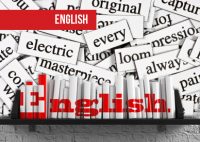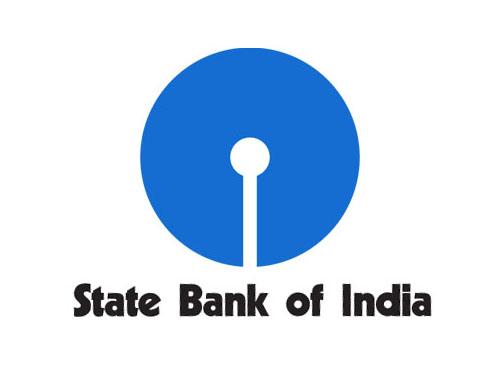Comprehension For SBI PO set – 22

Comprehension Set – 22
A few IITs and IIMs do not make an educational summer. The 21st century is supposed to be all about human capital, but India doesn’t yet have a coherent plan for its development, or for meeting the thirst for quality education that exists-leading to Indians spending as much as $3 billion annually to study abroad. One Ministry proposed recently to the WTO to open the Indian educational sector to foreign providers, but another Ministry has been opposing this tooth and nail. Its plea is that the domestic education sector must be protected. In keeping with this mindset it has proposed the Foreign Education Providers Regulation Bill (FEPR Bill), which bristles with archaic regulations designed to keep foreigners outmoded in other sectors where we are waking up to the realization that trade is a revolving door. If foreigners export to us, we can do the same to them too. This is particularly true of education-if anything, the Indian affinity for it gives us a competitive edge if we dare to throw open our classrooms. A group, set up by a PIO entrepreneur, has already established a large chain of successful schools in the UAE and expanded to the United Kingdom. Delhi Public School has branches in Los Angeles, New York and Washington DC. There’s no reason why IIMs can’t set up in Singapore or Bangkok and run profitable branches there, if allowed. Indians are now dealing with the world confidently. If there’s need to clear mental cobwebs inherited from the past, this is particularly so for education. It does not prosper if restricted to an artificial, hothouse environment. But if fully opened up to private send foreign investment, it can take on the world. From losing $3 billion annually it could become a net foreign exchange earner for the country. But that’s only the icing on the cake. The real cake is that an upgraded educational system is needed to maintain Indian advantages in the global services sector, where skill shortages are currently leading to high labour cost that could cause companies to ship elsewhere. Even in case of industry and agriculture, an educated workforce helps enormously in enhancing productivity. On a human level, education becomes less alienating if one learns useful skills at the end of it, instead of just earning a paper degree. Indian students now commit suicide at a rate rivalling that of farmers. If they don’t get that much attention it is because education isn’t yet a political issue in India. It’s high time it became one.
1. According to the author, the emphasis of the present century is on the development of
(a) global trade
(b) seeking higher education abroad
(c) nurturing and developing human resources
(d) increasing budget on education
(e) protecting domestic educational institutions
2. The basic purpose of FEPR Bill appears to be
(a) to protect India’s cultural heritage
(b) to eradicate monopoly of domestic education
(c) to maintain the quality of education
(d) to keep away foreign tourists
(e) None of these
3. Which of the following, according to the author, is/are the shortcoming(s) of our country?
(A) A systematic module for betterment of human resources
(B) Adequate foreign exchange to help talented students to study abroad
(C) Systematic plans for providing education of a desirable standard
(a) A and B only
(b) A and C only
(c) B and C only
(d) All the three
(e) None of these
4. Which of the following best explains the clause “trade is a revolving door”?
(a) Trading with foreign countries is mutually beneficial.
(b) If trade is opened to foreign countries, it affects the domestic market adversely.
(c) Trade with foreign countries is more beneficial to India than to the foreign country.
(d) Trade with foreign countries is less beneficial to India as compared to the former.
(e) Foreign trade enhances the chances of getting blocked in the area of export-import.
5. What, according to the author, do IIMs ask for opening centres abroad?
(A) Adequate expertise
(B) Sufficient funds
(C) Permission from the foreign country
(a) A only
(b) B only
(c) C only
(d) All the three
(e) Either A or B
6. Which of the following statements is/are FALSE in the context of the passage?
(A) Indians are yet to realize that free trade with other countries is helpful for India’s development.
(B) The FEPR Bill is aimed at preventing foreigners’ entry into Indian education system.
(C) Indians are very unlikely to survive in the open competition if the field of education is opened to foreign countries.
(a) A only
(b) A and B only
(c) B and C only
(d) A and C only
(e) All A, B and C
7. According to the author, the roots of the confusion in our thinking lie in
(a) leaders’ decision-making
(b) our perception about foreigners
(c) the past
(d) comparing trade with education
(e) our economic system
8. If India’s education sector is fully opened to foreign countries, which of the following would be the likely impact(s)
(A) Prevention of loss $3 billion per annum
(B) Increase in foreign exchange
(C) Skill shortage will be aggravated
(a) A and B only
(b) A and C only
(c) B and C only
(d) All the three
(e) None of these
9. Which of the following, according to the author, can make education directly relevant?
(A) Bestowing useful skills
(B) Bestowing a degree
(C) Distinguishing between knowledge and skills
(a) Only A and B
(b) Only B and C
(c) Either B or C
(d) All the three
(e) None of these
Directions (Q. 11-12): Choose the word/group of words which is most nearly SAME in meaning as the word/group of words given in bold as used in the passage.
10. ENORMOUSLY
(a) Tremendously
(b) Forcibly
(c) Rarely
(d) Minutely
(e) Ruthlessly
11. RIVALLING
(a) Challenging
(b) Opposing
(c) Containing
(d) Equating
(e) Withstanding
12. THIRST
(a) Emphasis
(b) Rational
(c) Greed
(d) Standard
(e) Requirement
Directions (Q. 13-15): Choose the word which is most OPPOSITE in meaning of the word given in bold as used in the passage.
13. ALLIENATE
(a) Distancing
(b) Involving
(c) Isolating
(d) Disaffecting
(e) Discriminating
14. COHERENT
(a) Rational
(b) Consistent
(c) Illogical
(d) Lucid
(e) Articulate
15. ARCHAIC
(a) Outdated
(b) Obsolete
(c) Pre-historic
(d) Outmoded
(e) Modern
Answer key:
1. (c) 2. (e) 3. (c) 4. (a) 5. (c) 6. (d) 7. (a) 8. (a) 9. (e) 10. (a) 11. (a) 12. (e) 13. (b) 14. (c) 15. (e)


